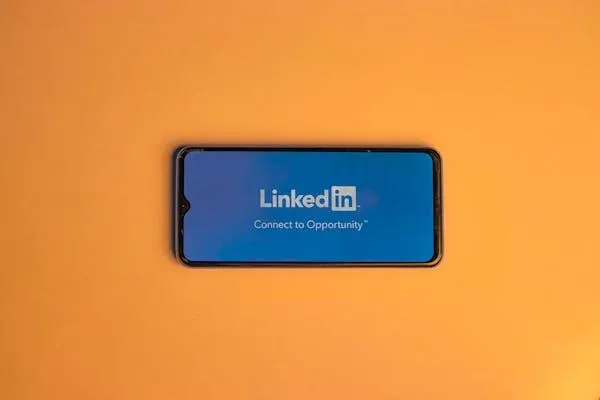Blog

Troubleshooting Low Response Rates in LinkedIn Outreach for Advisors
Advisors often find LinkedIn to be a powerful tool for expanding their professional network and connecting with potential clients. However, when the response rates are lower than expected, it can become frustrating and challenging to understand what went wrong. Figuring out why messages aren't hitting the mark is important for improving these vital connections and fostering growth. By examining and understanding the reasons behind low response rates, advisors can take targeted actions to enhance their outreach strategy.
Addressing these challenges is not just about maintaining a strong client base; it can also boost overall business growth. Effective LinkedIn outreach can open doors to new opportunities that might not have been previously considered. Recognizing the root causes of low engagement can empower advisors to refine their approach, ensuring their efforts have the desired impact. It’s all about gaining the confidence to put the best foot forward in a space that has immense potential for growth.
Understanding Low Response Rates
Low response rates on LinkedIn can sometimes seem like a mystery, but there are often clear reasons why messages aren’t clicking with the audience. One common issue is the use of generic messaging. Messages that feel like they're part of a mass outreach effort lack the personal touch needed to engage busy professionals. People are much more likely to respond to messages that feel crafted specifically for them.
Timing and approach are two critical elements that can affect responses. Sending messages at inappropriate times, such as weekends or late nights, can often lead to them being overlooked. Similarly, the initial impression created by your profile can also influence responses. If your LinkedIn profile doesn’t align with the professional image you wish to convey, it might be time for a refresh.
Here's a quick list to recap what might be affecting your LinkedIn outreach:
- Generic messaging without personalization
- Poor timing in sending messages
- Ineffective initial profile impression
By identifying these factors, you’re in a better position to tweak your strategy and turn those lukewarm responses into positive interactions. Small changes can make a world of difference, allowing you to get a clearer picture of how to adapt your approach moving forward. Addressing these problems can lead to a richer and more engaging connection with your prospects.
Crafting Engaging Messages
Once you've identified factors affecting response rates, the next step is to create more engaging messages. Crafting personalized and compelling outreach is crucial. This doesn’t mean writing lengthy essays; instead, you should focus on making each message feel personal and relevant. Start by addressing the recipient by name and mention something specific about their profile or industry. This demonstrates that the message isn’t just another generic note, but one written with thought and purpose.
Catchy subject lines also play a huge role in getting your messages opened. Think of subject lines as headlines—grab attention, but keep them relevant and straightforward. Clear call-to-actions (CTAs) within the message guide the reader on what to do next, whether it's scheduling a meeting or checking out your LinkedIn page. Having a balance between being persuasive and friendly encourages interaction without coming across as too pushy.
Consider an example where an advisor wants to connect with a technology executive. Instead of saying, "Let's connect to grow our networks," try something more specific: "I'd love to connect as we both navigate the tech space—might you be open to a brief chat?" This message has a personal touch and clearly states the intent, increasing the likelihood of a positive response.
Utilizing an Outsourced Marketing Executive
Sometimes, external expertise can be invaluable. Hiring an outsourced marketing executive to handle LinkedIn outreach could significantly enhance your strategy. They offer fresh perspectives, provide professional crafting of outreach messages, and ensure that each message aligns with your brand image. Having someone who understands the nuances of LinkedIn marketing and communication can drastically improve engagement rates.
The benefits of bringing in outside expertise include not just improving message quality but also expanding reach. These professionals have the know-how to target the right audience effectively and can help you analyze and adjust strategies as needed. If you’re considering this route, look for someone who has a proven track record in your specific area of interest. Conducting interviews and seeking recommendations can help identify the right fit for your business needs.
Analyzing and Adjusting Your Strategy
Success in LinkedIn outreach doesn’t end with sending messages. Continuous monitoring of your campaigns is important for understanding what works and what doesn’t. Tracking key metrics like message open rates and response rates provides insight into the effectiveness of your strategies. This data allows you to make informed decisions and adjust your approach accordingly.
If messages aren't performing well, rethink your strategy and make changes based on the feedback and metrics you've gathered. It might be necessary to tweak the timing, alter the message structure, or even refine target audiences. Being open to learning from the data ensures that you're always moving forward with a more effective outreach plan.
Taking Control of Your LinkedIn Outreach
Taking proactive steps can dramatically improve your LinkedIn outreach success. It’s essential to remain engaged with the process, ensuring you’re constantly learning and adapting. Small, consistent improvements will lead to greater response rates over time. Encourage an environment where feedback is valued and put insights into action promptly.
Remember, the primary aim is to build valuable connections. By focusing on clear communication, personalization, and professional guidance, you can navigate the challenges of low response rates efficiently. It’s about making each interaction meaningful and maximizing the potential of every LinkedIn connection opportunity.
Elevate your LinkedIn outreach capabilities by considering an outsourced marketing executive to enhance your strategy and achieve higher engagement rates. Visit Prospecting Partners to discover how our services can help you connect with the right prospects and propel your business forward.
